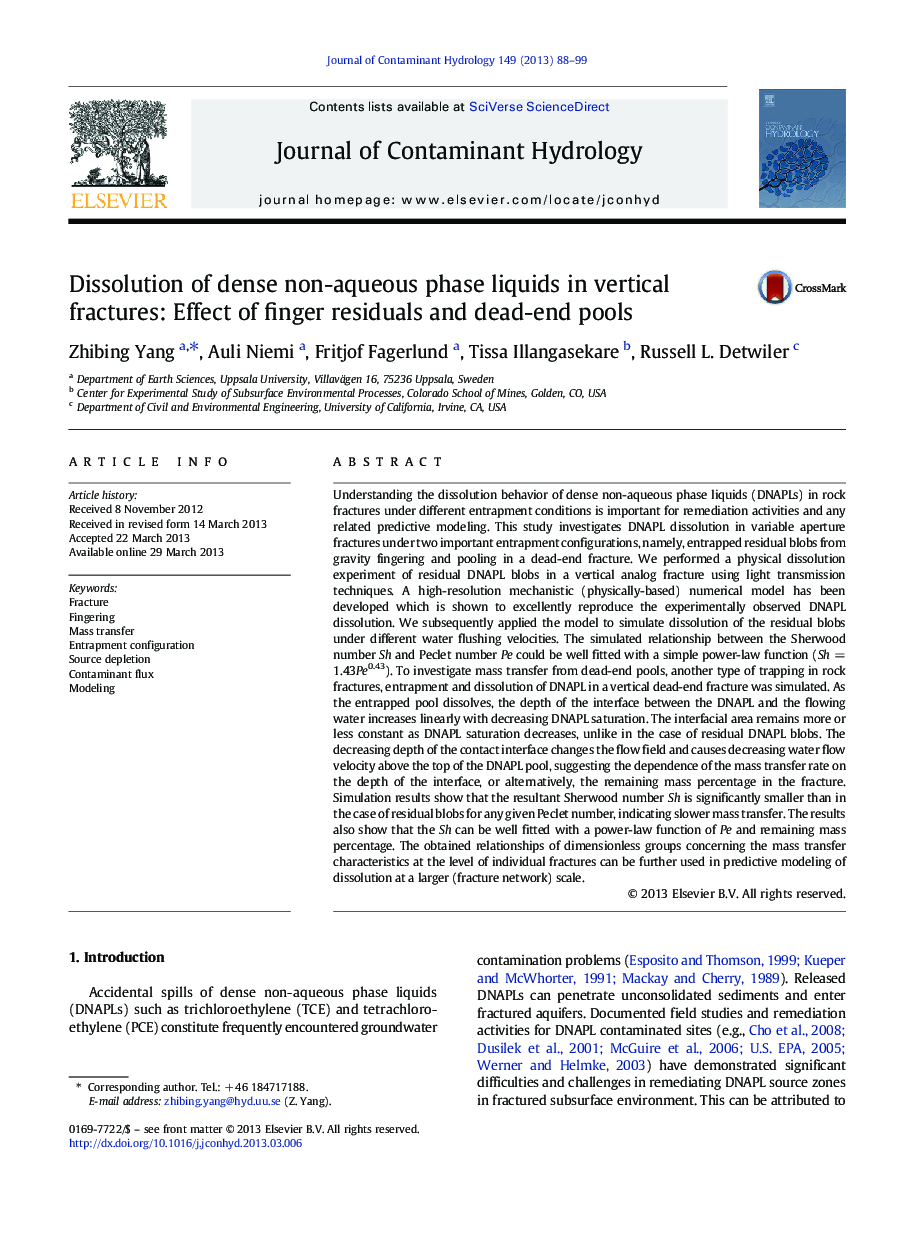| Article ID | Journal | Published Year | Pages | File Type |
|---|---|---|---|---|
| 4546689 | Journal of Contaminant Hydrology | 2013 | 12 Pages |
•A computational model is validated against a DNAPL dissolution experiment.•Dissolution kinetics is studied for both cases of residual blobs and dead-end pools.•Fracture-scale constitutive relationships are proposed using dimensionless groups.
Understanding the dissolution behavior of dense non-aqueous phase liquids (DNAPLs) in rock fractures under different entrapment conditions is important for remediation activities and any related predictive modeling. This study investigates DNAPL dissolution in variable aperture fractures under two important entrapment configurations, namely, entrapped residual blobs from gravity fingering and pooling in a dead-end fracture. We performed a physical dissolution experiment of residual DNAPL blobs in a vertical analog fracture using light transmission techniques. A high-resolution mechanistic (physically-based) numerical model has been developed which is shown to excellently reproduce the experimentally observed DNAPL dissolution. We subsequently applied the model to simulate dissolution of the residual blobs under different water flushing velocities. The simulated relationship between the Sherwood number Sh and Peclet number Pe could be well fitted with a simple power-law function (Sh = 1.43Pe0.43). To investigate mass transfer from dead-end pools, another type of trapping in rock fractures, entrapment and dissolution of DNAPL in a vertical dead-end fracture was simulated. As the entrapped pool dissolves, the depth of the interface between the DNAPL and the flowing water increases linearly with decreasing DNAPL saturation. The interfacial area remains more or less constant as DNAPL saturation decreases, unlike in the case of residual DNAPL blobs. The decreasing depth of the contact interface changes the flow field and causes decreasing water flow velocity above the top of the DNAPL pool, suggesting the dependence of the mass transfer rate on the depth of the interface, or alternatively, the remaining mass percentage in the fracture. Simulation results show that the resultant Sherwood number Sh is significantly smaller than in the case of residual blobs for any given Peclet number, indicating slower mass transfer. The results also show that the Sh can be well fitted with a power-law function of Pe and remaining mass percentage. The obtained relationships of dimensionless groups concerning the mass transfer characteristics at the level of individual fractures can be further used in predictive modeling of dissolution at a larger (fracture network) scale.
